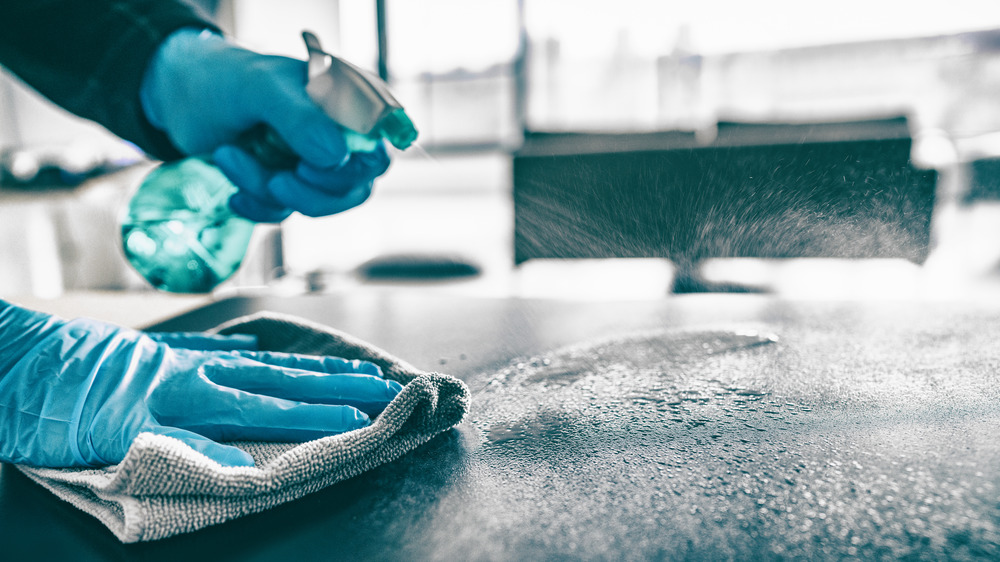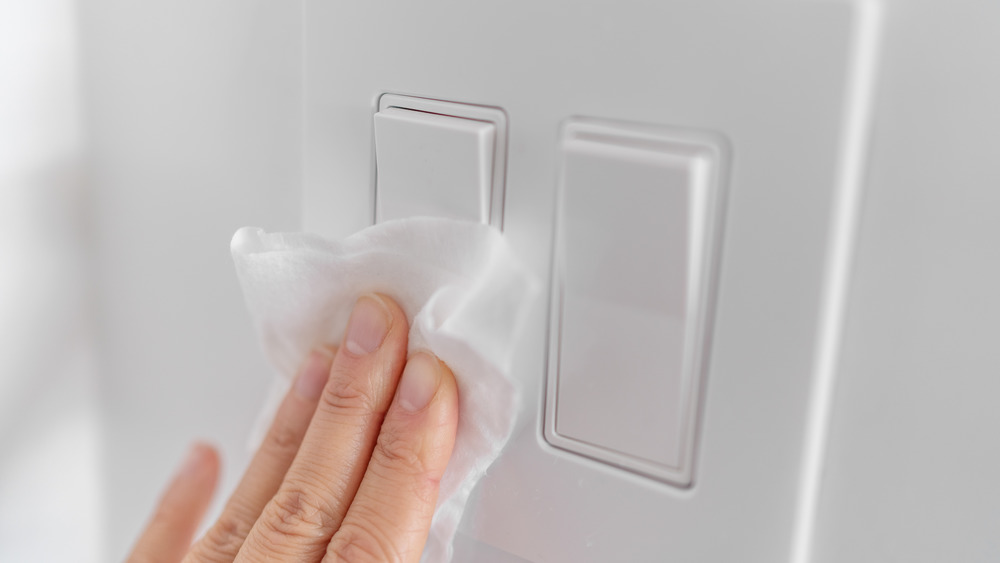Why You Shouldn't Try Replacing Your Disinfectant With Vinegar
Vinegar has become a popular cleaner in many households because it's a natural way to get rid of dirt and odors. But a cleaner is not the same thing as a disinfectant, something that is essential in homes and businesses for its ability to kill germs, bacteria, and viruses. Some disinfectants can even kill COVID-19, according to the CDC.
Vinegar has its limits when it comes to disinfecting. White vinegar (the best vinegar option for cleaning) can only kill salmonella, E. coli, and listeria — all bacteria that cause foodborne illnesses (via Healthline). That's just not enough to disinfect your home and keep everyone from getting sick.
Vinegar is excellent for cleaning some surfaces. It can remove dirt and grime from windows, countertops, sinks, glass, stovetops, shower heads, and coffeemakers. Vinegar can get rid of soap scum in your shower and tub, clean your microwave, remove stains in mugs, and unclog your drains. But the acidity in the vinegar will damage cast iron, aluminum, marble, soapstone, granite, or waxed wood. Don't use it on these materials.
Remember that a vinegar solution will only clean, not disinfect. You can make an all-purpose vinegar cleaner with a half cup of white distilled vinegar and two cups of distilled water. Add that to a spray bottle and label it. Spray, and wipe the surface dry with a cloth.
How to disinfect your home
Use the EPA's List N Tool to determine if your disinfectants kill COVID-19 or any other viruses, bacteria, or germs. There are several options for searching for disinfectants. The results will tell you the active ingredient, the brand name of the product, the contact time (how long it must sit to disinfect), types of surfaces it works on, and what it kills.
Find disinfectants for soft and hard surfaces, electronics, and laundry. If you can't find one on the EPA's List N Tool, you can make your own with bleach. The CDC recommends using bleach that has five to nine percent sodium hypochlorite. If the label doesn't specify or doesn't have that amount, don't use it for disinfecting. Make a solution with four teaspoons of bleach per quart of water. Remember to clean items before disinfecting them. Again, a vinegar solution can work for cleaning, but not disinfecting.
Wear gloves when disinfecting, especially when handling anything from someone who is ill. Wash your hands with soap for 20 seconds when you take the gloves off.
Wash carpets, rugs, curtains, and other soft surfaces with a disinfectant. Vacuum as usual. For laundry, use your washing machine. Choose the warmest possible setting according to the instructions on your items.
Make disinfecting electronics easier by putting a wipeable cover on phones, tablets, keyboards, remote controls, and touch screens. Follow the manufacturer's instructions for cleaning and disinfecting.
Wipe down counters, tables, light switches, doorknobs, mop floors, and other hard, non-porous surfaces with the proper cleaner and disinfectant. Avoid damaging any material by using the EPA's search tool to be sure you're using a disinfectant that is safe for the type of surface at hand.


